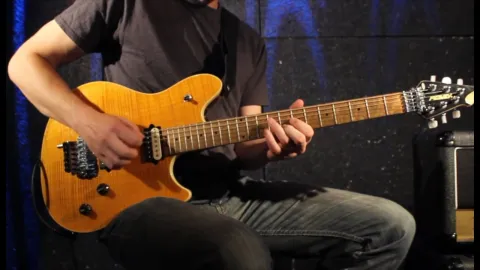Improvising: Chord Scale VS Key Center

Chord Scale vs Key Center
Now it gets interesting. How do we improvise in a non-diatonic progression? How can we play major and minor sounds in the same progression? How can that possibly sound good? I'm going to break this down in a very simple way.
There are basically two scale approaches in non-diatonic harmony: key center and chord scale - and a combination of both is what we aim for.
A key centered approach is exactly that - all of your scale choices relate to the tonic.
For example, I could have a progressions in the key of C with six different changes in it. Over each change, the scale will still be a C something because the thought process is that we are constantly going to say something about C.
That's the idea behind a key centered approach - the tonic is the chosen point of emphasis, and the playing represents that by choosing a tonic-centered scale for each chord, which allows the tonic to be the continuous theme of the tune.
A chord scale approach, on the other hand, is the exact opposite:
In a chord scale approach, each chord is its own moment in time.
Each chord was chosen to perform a specific function, so for each chord we will choose a scale - based on the root of that chord - which helps the chord achieve its fullest functioning potential.
This train of thought can result in lines with far less continuity, but certainly with far more color.
Let's begin with modal interchange. As you remember, modal interchange is the borrowing of a chord from a parallel mode. Hopefully, you have figured out that when we are improvising over a borrowed chord, the borrowed chord doesn't change the key center of the tune, only the tonality. Therefore, as an improvisor, it would behoove us to accentuate that tonal alteration by playing that scale that the chord was borrowed from, in order to not change the key centered theme. This is classic key centered approach. It sounds great.
Now let's talk about secondary dominants. The key to improvising over secondary dominants is knowing how the chord resolves.
We break it down into two scenarios:
Functioning Dom7 resolving to a major chord:
- Mixolydian
- Lydian dominant - especially when you see a #11
Functioning Dom7 resolving to a minor chord:
- Harmonic minor
- Altered scale
It is very important to note that you should always keep chord tones in mind when mixing the key-centered and the chord scale approach.
We have discussed this many times, but to reiterate, you chose your specific chord tones on purpose. Don't make choices that conflict with the chord tones you have already chosen. Strive to have your context and your color in perfect harmony.
But what if you don't know what the harmony is supposed to be? What if you didn't write the progression? What if you see a chord and have no idea what to play? How do we figure it out? The easiest way to figure this out is to look at the chords that came before.
As a general rule of thumb, notes that are already ringing tend to want to stay ringing. So if you are unsure whether or not to play a B or Bb over a certain chord, look to the previous chord. Is either one in that chord? Or the chord before that?
Most of the time it will be.
But surely that can't be the only answer to solving these chord functions from a chord tone standpoint. There is a very simple way to analyze and approach chord tone changes over a progression: The leading tone.
The leading tone is the note that is a half-step below the note to which you are resolving. Take for example, G7-C7. The B note (the 3 in the G7) is a half-step below C, which is the root of the chord we are resolving to.
But, we can resolve to notes other than roots. We can resolve to anything we want.
To be clear, the note creating the tension which requires resolution is the leading tone. It is always a half-step behind. This is the key to actually saying something over changes.
This is big big news.
*In simple simple terms: you can always play behind a harmony and make it resolve. Playing above a harmony creates general dissonance without specific resolution requirements.*
It could take years of classical studies to understand the theory behind this truth, but forget that. That's the deal. You play behind and you can push the harmony around.
The note higher in pitch always wins.
To illustrate:
If you play a C major chord, and someone else plays a C minor chord, you will hear a C major sound with some dissonance. The C minor is just color because the Eb in C minor is behind, or lower, than the E in C major.
As always, this becomes clearer with a slower tempo. A real fast tune affords the soloist more liberties, but slow it way down and you will find this underlying truth to be exactly that.
Mess around with these tracks and really find your personal balance between chord scale thinking and key center thinking.
Never forget about your chord tones and leading tones.
Jam Tracks:
1. "C" - Ima - IVmi - bVIIma - V7
2. "E" - Ima - IVmi - bVIIma - V7
3. "Ab" - I7 - III7 - IV7 - #VIdim7 - Ima - bVI7 - IImi - V7alt
4. "C" - I7 - III7 - IV7 - #VIdim7 - Ima - bVI7 - IImi - V7alt